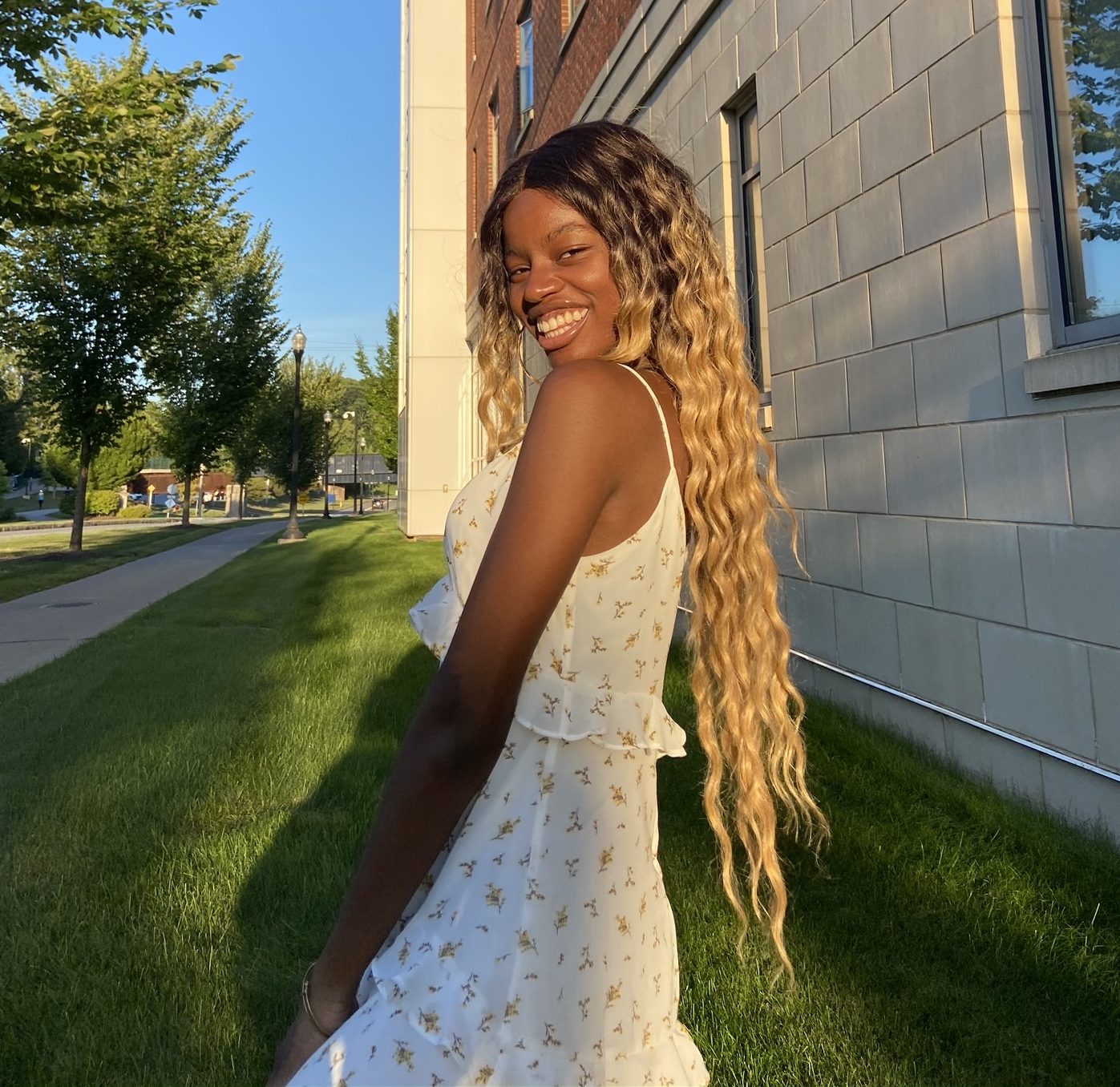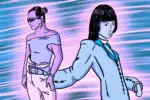Lights, camera, drama, fashion! These are all the things that make “Next In Fashion” full of so much color, passion and love that you don’t typically see on competition shows. But with Tan France from “Queer Eye” and fashion designer Alexa Chung leading the fray, it’s no surprise that “Next in Fashion” turned out to be more heartfelt than expected. However, that doesn’t mean the show loses any of the tension and angst that comes with competition. For some, it is a lifeline to win, for others, it’s all about personal growth; nonetheless, all 18 designers fight for the chance to win $250,000 and to showcase their winning collection on the Net-a-Porter site. In the end, we have to question what truly is next in fashion and what does it mean to hold that title within the industry.
Lights
When the spotlight is on, so is the pressure. To be better, to be bold, to be sexy, to be creative and to think of the future of fashion. But what is that? “Next In Fashion” forces contestants to test those boundaries, and the fact that these are acclaimed designers from all over the world makes the competition even more interesting. With years of experience under their belt and many of them running their own brands, we don’t expect amateur work, and yet we watch the many ways in which these very successful creators doubt themselves and stress over potential failure.
One of the main challenges is the time constraint. We watch when Carli gets frustrated with herself because she takes on an overly ambitious project and it isn’t done within the two days’ time limit. Or when Minju breaks down in tears because she’s never done lingerie before. And despite both of them winning challenges previously, these small weaknesses could be the thing that sends them home. Contestants are humbled as they have to learn new things to meet challenge requirements — such as Angelo learning sewing skills or Ashton having to learn how to use color so his designs can pop on the runway.
But it’s the same old saying that confidence is key, and it makes or breaks a lot of the creativity in the designer’s work. Artists become tied to their art and that art is what represents them in the end. Mishaps show the audience that these designers are human and sometimes their doubts can get the best of them or simply make them realize that they have a lot more to learn despite everything they know.
Camera
For the first half of the show, the contestants are partnered up. For some, it works out well. If people came with friends, such as Minju and Angel and Marco and Ashton, it allowed them to use their prior experience with the other to their advantage. For others, like Angelo and Charles or Carli and Daniel, it is their first time meeting and working together, and it does not always go well, but seeing everything filmed brings to light the reality of their partnership. For Kiki and Farai, there is a moment where their friendship is tested as they argue over design ideas, but Carli and Daniel, who come from very similar design backgrounds, are able to mesh well and win a challenge together with their teamwork.
Friendships are put to the test, and the show highlights a deeper truth about these pairs — friendship doesn’t always sustain working partnerships if you have different ways of thinking and doing things, but for others, it helps to balance each other out. Angelo is a creative director in his normal life and Charles is skilled in technical design. Putting Angelo’s ideas and Charles’ skill together works well for them and allows them to win challenges, which is nice to see for people who just met. But at the same time, for Nasheli and Issac, their differences send them home. In the end, the pairs that do end up working well together are able to say that their partners push them out of their comfort zones, challenge them to be different and create a special bond— even for those who have already been working together awhile.
Drama
This competition means something different to each contestant and the prize would make a difference to each one of their lives. For some, the prize could be used to start their brand or to give back to their families or to further grow their companies. However, because most of these designers are already successful, it allows the group to form a more intimate connection and they are able to laugh and cry together. They help and look out for each other. And even when the pairs have to split up in the final rounds, a positive attitude is still present in the room. Of course, that does not mean this competition doesn’t come with its own set of stress and challenges.
Although many of the contestants have their own brands, Charles does not. His work was stolen by another designer previously and winning would be his chance to finally start his own company. Unfortunately, he does not make it to the end, but he walks away with new friends. Angelo brings out such a positive light in him and their partnership is able to push both of their creative abilities. But at the same time, we get to see that Charles is holding himself back. Because he has the most to lose, he is scared to test the waters with his designs. Hopefully, being sent home helps him to recognize that he has to push himself in order to be a better designer.
One of the main things that is talked about is the importance of seeing minorities represented in the fashion industry. Claire gets sent home with her partner Adolpho, but as a Japanese Jamaican British woman, she feels proud to be able to represent her community on the show and in fashion. Farai gets to demonstrate Zimbabwean culture in the patterns challenge and show that her culture can also be couture. When the contestants do the lingerie challenge, there is an emphasis on dressing a plus-sized female model and how certain clothes look on different body types — although, as much as I love the representation, it is blatantly obvious that the fashion industry is not diverse when it comes to body size and I think it is interesting that only women are encouraged to be body inclusive. What about plus-sized men? Not to mention, for the streetwear challenge, a judge walked off due to a disagreement over Kiki and Farai’s collection. Kiki launched FUBU’s women’s wear in the ’90s and has experience in the fashion industry and yet is one of the groups about to get eliminated for that challenge. Farai brings up the point in the show and in an interview that high-end fashion designers often steal minorities’ designs, and only then do the styles become cool.
Streetwear originates from hip-hop and Black culture in the late ‘70s, but since then it’s become more mainstream. It’s easy to see how the question of “what’s next in fashion” becomes subjective and exclusive, especially when it comes to something as cultured as streetwear, where high-end brands aren’t in the streets to see what’s trending. And yet those who do know what’s trending are told that their designs aren’t the judge’s “cup of tea” as a valid reason to eliminate them, rather than for the technical aspects of their work.
Fashion
From Minju’s dramatic dress reveal at the grand finale, to Charles and Angelo’s cape throw for the red-carpet runway, this show is full of surprises. But designers don’t just wow the judges. I’m no design expert, but I learned things like leather is hard to sew, clean lines are highly regarded in the industry, and apparently there is such a thing as being too modest on the runway. GQ emphasizes that the show focuses on making the audience relate to its designers on a personal level. “Next In Fashion” asks questions about what it means for Nasheli, who works three jobs and has kids to feed, to be sent home after being overpowered by her male partner, who already has his own company. In response, he shrugs the moment off, saying that “if [he] gets sent home, it’s just another day.”
This moment sheds light on the prevalent gender hierarchy within the industry, as well as the fact that many designers are struggling artists. If you know someone, if you have money, if you have the connections, then you will make it, and if you’re male, you still can overpower the woman in the room. But on the flip side, it also shows how designers need to have something to say and not just a passion for fashion.
People’s definition of what “sexy” or “rock” is can be different. Those like Ashton, who styles celebrities but perhaps hasn’t learned how to evolve outside of his area of expertise, won’t make the cut. But if you’re inspired and innovative, that’s what the judges are looking for. Those are the people who make it the furthest.
I also love the emphasis on how much pressure it is to work in this industry. Whether it’s because of your racial identity, or your financial background, it can be hard to make it and it’s hard to stay relevant. Which is why I appreciate Tan’s questions: “How do you feel? How are you doing? Are you okay?” Whether it is about a design, or if he sees that someone is struggling with their partner or simply at the end after they’ve won or lost, he always sends them off making sure they know they’re cared for by at least one person in the industry.
And as the group gets smaller, the connections formed blossom into something intimate and heartfelt. You are able to see the way the designers encourage and support each other emotionally and creatively, because space is formed in that way. Each designer is there to learn and grow and for those at the end, they are truly able to appreciate the experience for more than just the technical stuff. “Next In Fashion” highlights a more holistic side of being a fashion designer but also what it means to have a passion for what you’re doing. It gives designers a chance to be creative, to show their friends and their family what they can really do, and to prove to themselves that they really are amazing designers.
So What’s Next In Fashion?
Unfortunately, the show will not be renewed for a second season. Tan wants to focus on “Queer Eye” and Netflix seems to enjoy pushing one-season shows. Honestly, I think it’s for the best. All in all, “Next In Fashion” shows us that it doesn’t matter how successful or talented you are, we’re all still human. We have our weaknesses, we have our insecurities, we have our challenges but pushing past that to help yourself grow and create something amazing is what the show is all about. I think we can all learn something from watching “Next In Fashion” that goes beyond Tan and Alexa’s fashion tips. Although, I’m glad to know new ways to style denim now. My new pair of jeans can’t wait.
But this competition can teach us that it’s not all about winning and you can leave with something greater. As you go through life you realize, while sometimes you lose your passion once you grow successful, making friends is more important, and you can always learn something new no matter how experienced you are. As for what’s next in fashion? I’m not sure. The winner of the show truly had the innovative vision that the judges and I were hoping for, but I do know that holding that title has a lot more weight than anyone might expect. The pressure to be creative and keep working toward the next thing can be tough, but it can also be fun as long as you make sure this is truly what you want to do. I hope all of the designers were able to feel more inspired by their craft.


















Next In Fashion” beautifully captured the human side of design—collaboration, culture, and creative growth under pressure. It’s a rare look at how passion meets resilience in the fashion world. If this show sparked your interest in design or trends, fashion is a great place to explore what’s truly next in the industry.